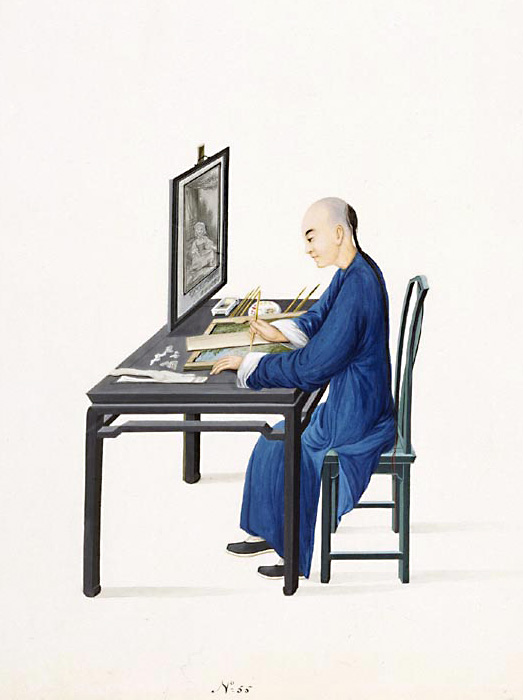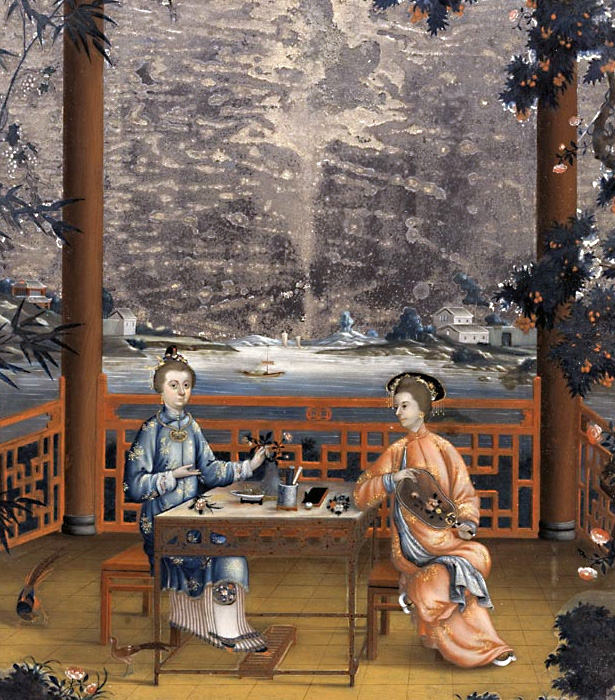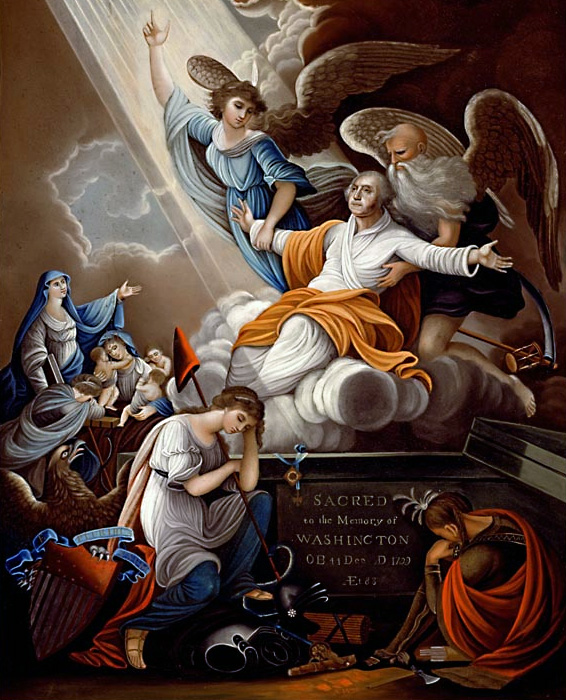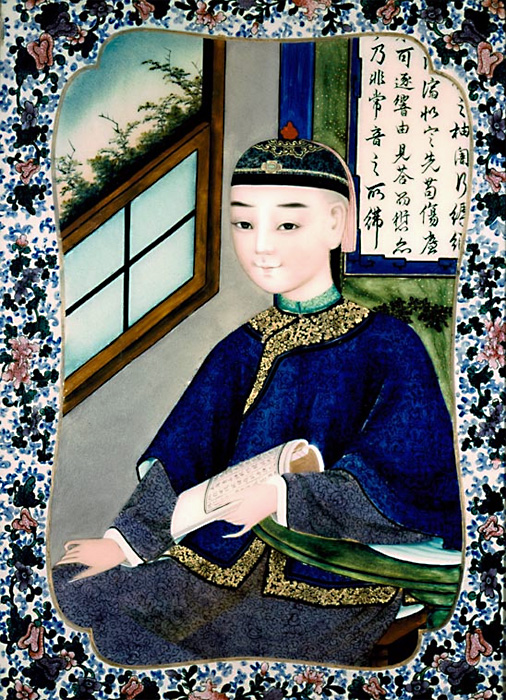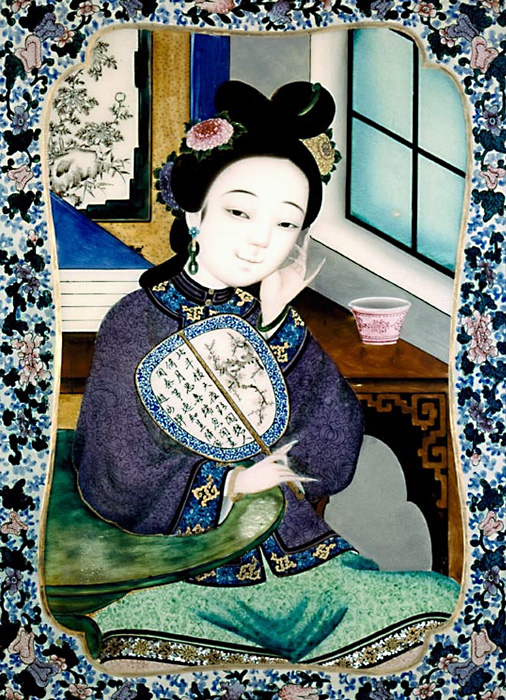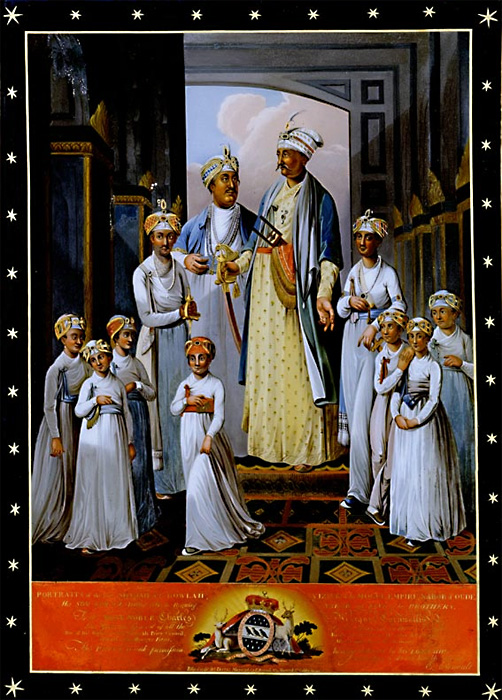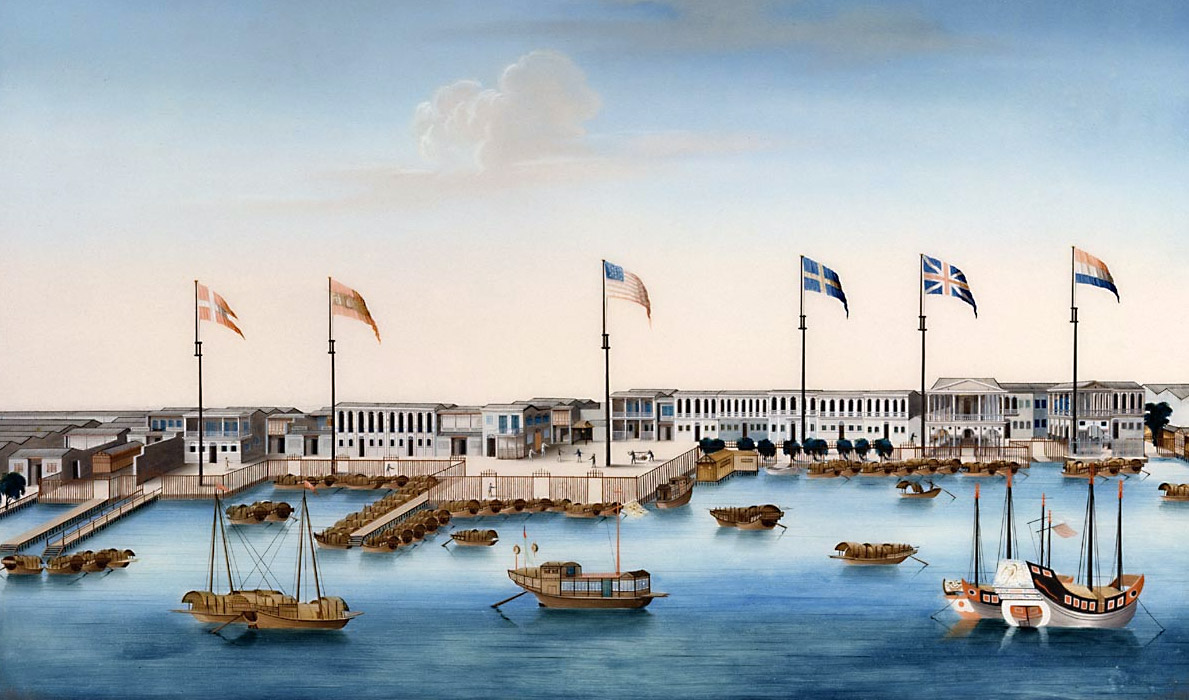18th-century Chinese artists mastered the art of reverse glass painting, and were often commissioned to execute intimate portraits of resident foreigners.
“Mrs. and Miss Revell in a
Chinese Interior,” ca.
1780
Peabody Essex Museum
[cwPT_1780C_AE85763_Revell.jpg]
This reverse glass painting, titled The Apotheosis of Washington, was copied by a Chinese artist from an engraving by John James Barralet and Simon Chandron of Philadelphia. It had been brought to Canton for that purpose by Captain David Ockington.
“Apotheosis, Sacred to the
Memory of Washington,”
ca. 1802
Peabody Essex Museum
[cwPT_1082c_AE81885_Apoth.jpg]
These sumptuous paired portraits were perhaps commissioned by the unknown sitters, or may have been produced assembly-line style for the Western market. By the mid 19th century Chinese reverse glass paintings were exported in huge quantities.
“Mandarin Man,” ca. 1858
Gift of Lawrence W. Jenkins
Peabody Essex Museum
[cwPT_1858c_M8873_Mandarin.jpg]
“Mandarin Woman,” ca. 1858
Gift of Lawrence W. Jenkins
Peabody Essex Museum
[cwPT_1858c_M8874_MandarinW.jpg]
The two main figures in this painting are based on a 1772 portrait painted in Faizabad, India by British artist Tilly Kettle; the rest are perhaps a fanciful rendering by the Chinese reverse glass artist or a Western engraver. Click here to see Shuja ud-Daula, with His Son Asaf ud-Daula by Tilly Kettle.
“Portrait of Shuja-ud-daula, Nawab of Oudh, and his
sons,” ca.1796
Guangzhou, China
[cwPT_1796c_AE85329_Shuja.jpg]
The foreign factories at Canton were a popular subject, and though many reverse glass paintings depicting them were created, few examples have survived.
“Canton Harbor and Factories
with Foreign Flags” by a follower of Spoilum, possibly Lam Qua.
Peabody Essex Museum
[cwC_1805_E78680_Flags]
An artist copies a European engraving onto the
reverse of a sheet of glass, to be viewed through the glass from the front; a technique developed in Renaissance Europe and brought to China by Jesuit missionaries. This style of painting became popular in China and spread to India and the world.
“A Glass Painter,” ca. 1790
Victoria & Albert Museum
[cwPT_1790c_2006AH3875_VA.jpg]
Reverse Glass Painting
